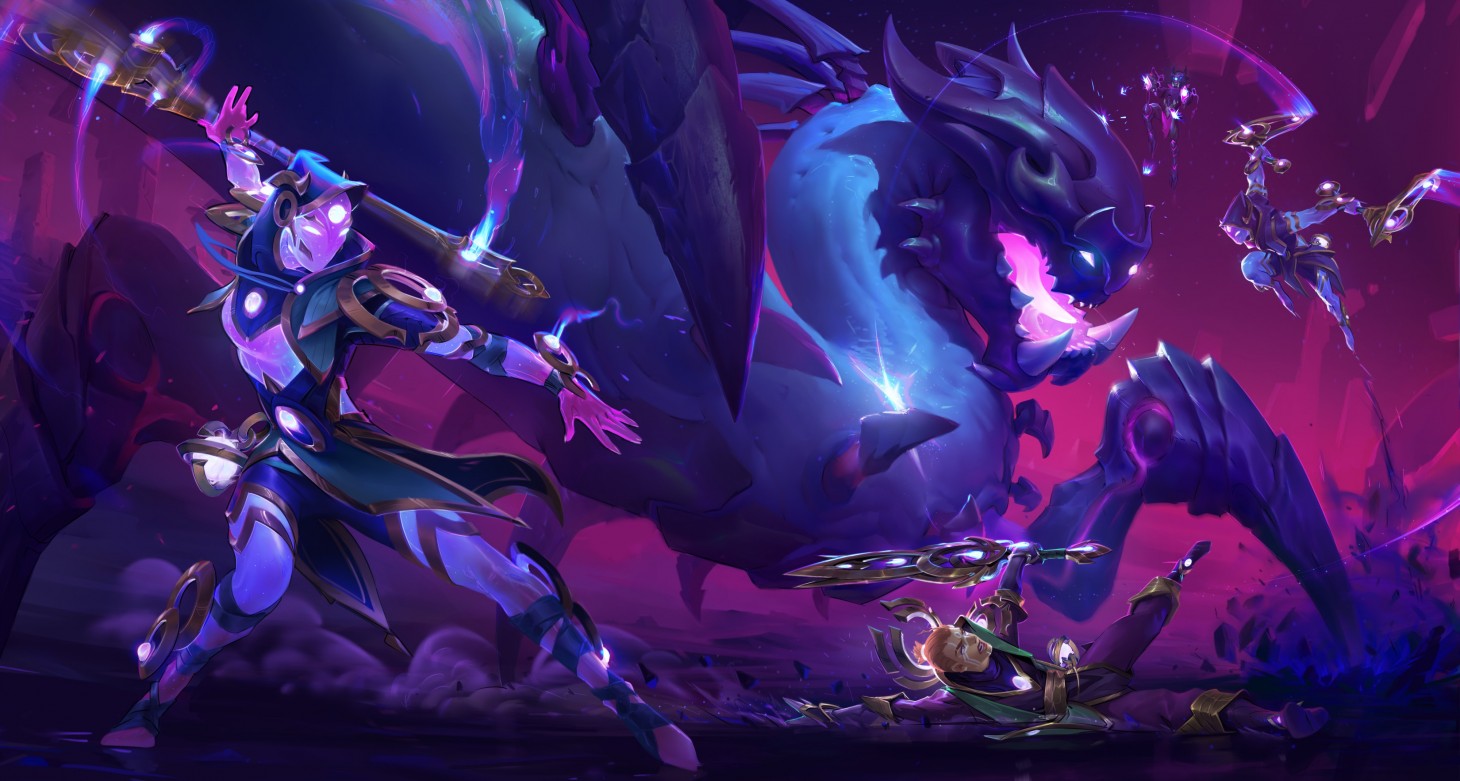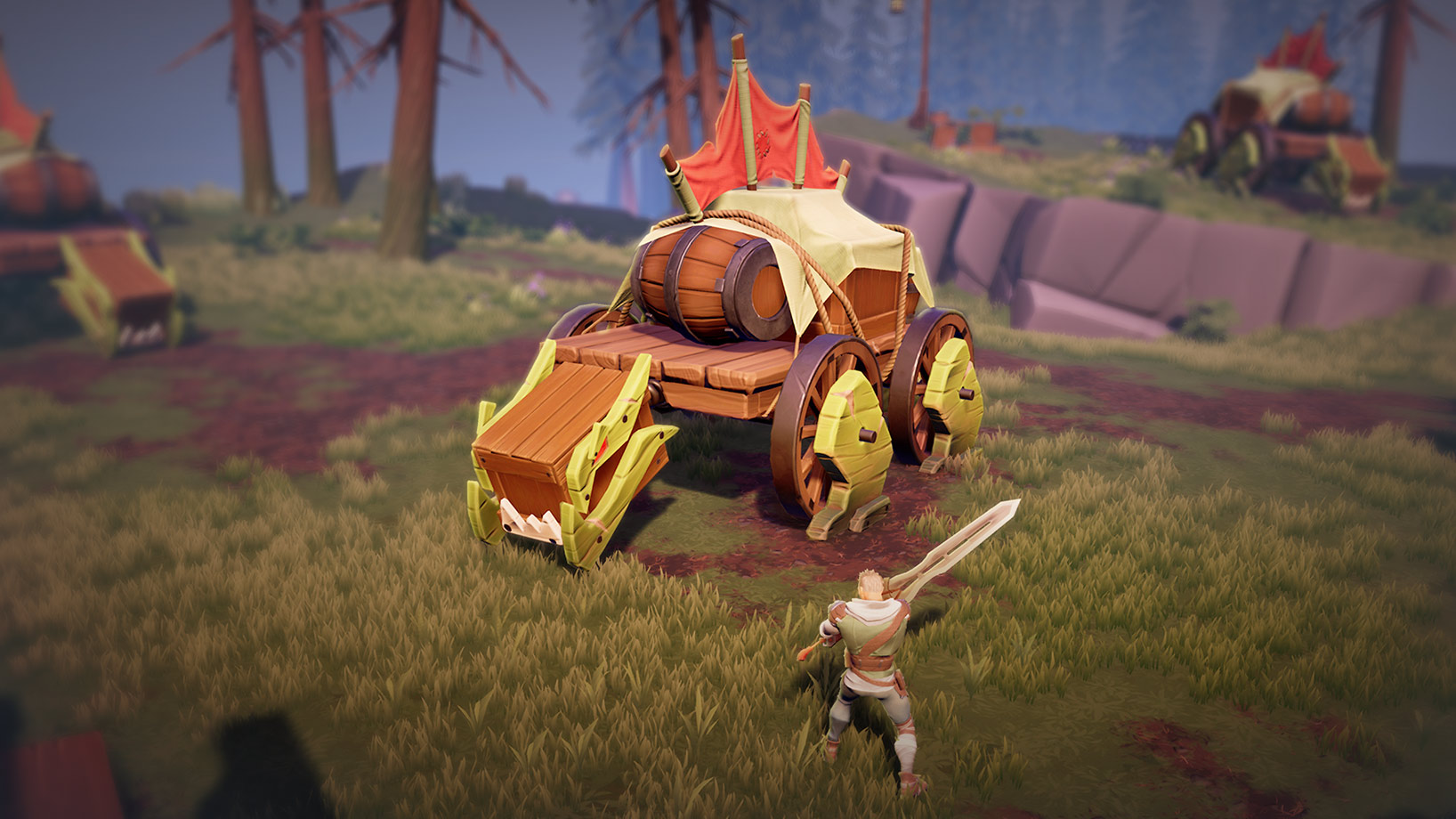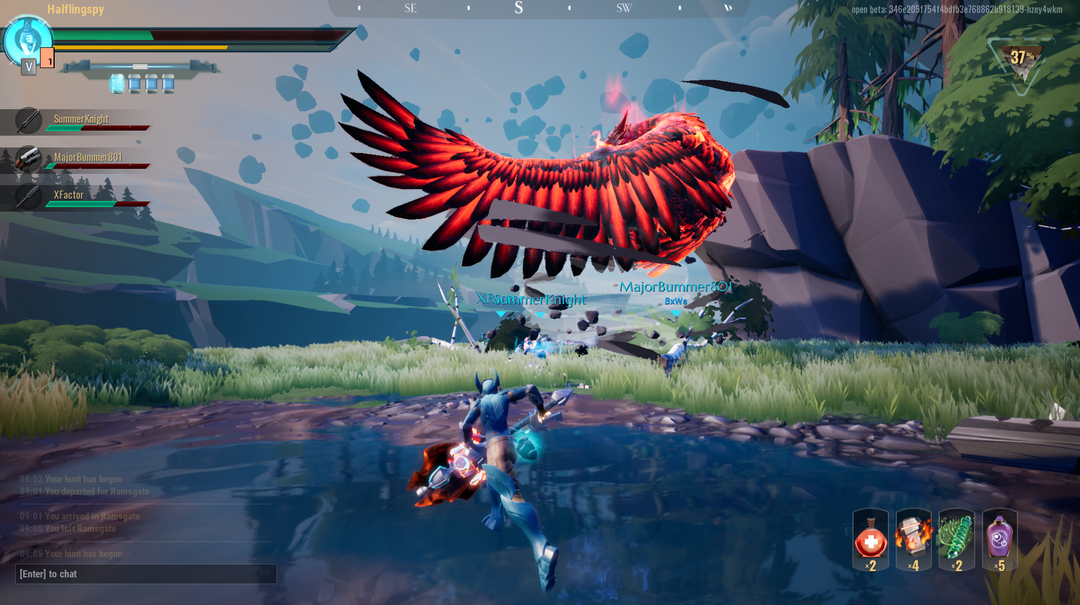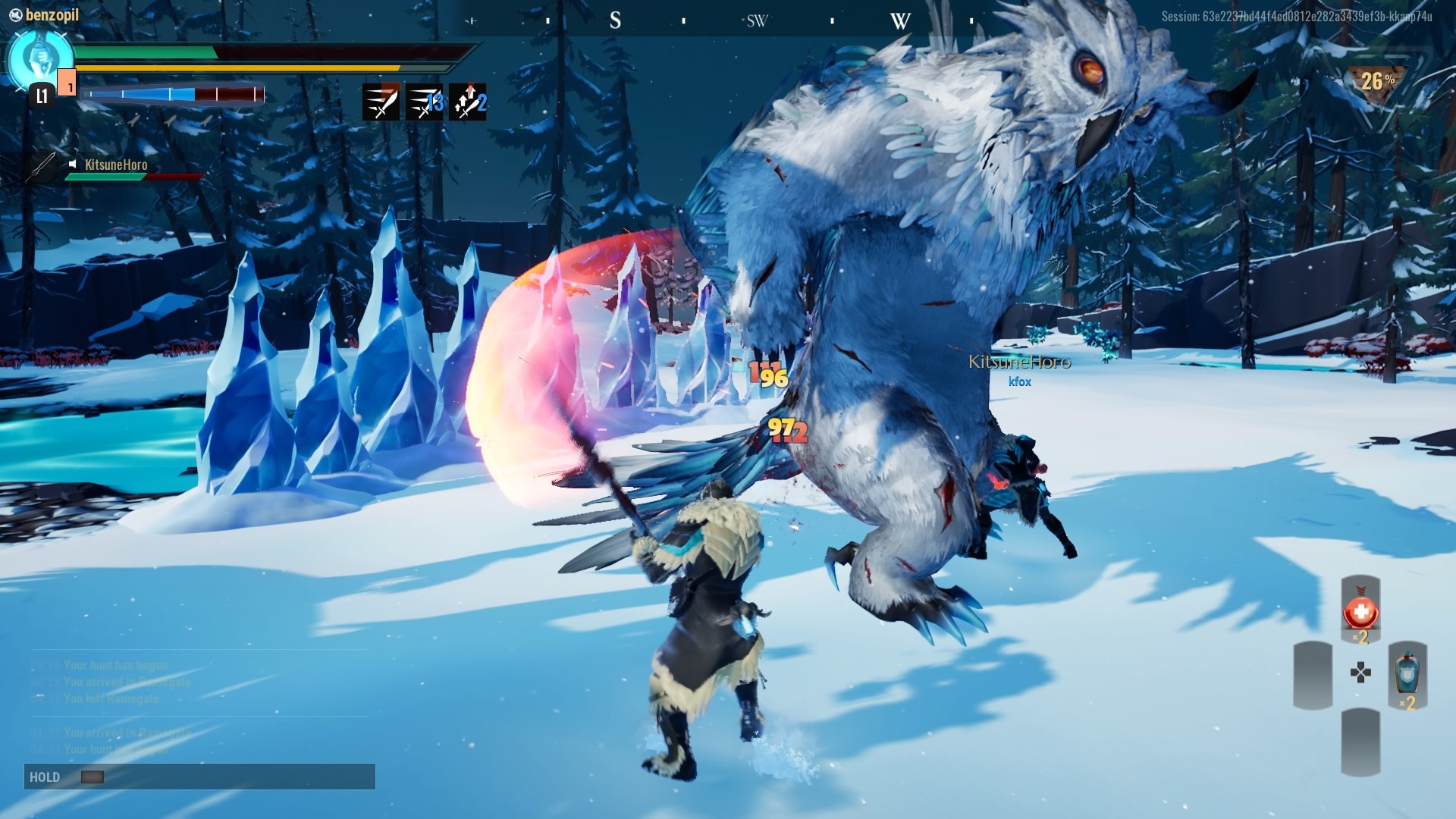Dauntless is a free-to-play online action RPG from Phoenix Labs that is available on PC, PlayStation, Xbox, and the Nintendo Switch. On June 11, the developers rolled out a major content update called Call of the Void.
Ahead of the update release, we caught up with Nick Clifford, Marketing Director at Phoenix Labs, to check out the new content and talk about the studio’s take on multiplayer games in 2020.
Nick Clifford, Marketing Director at Phoenix Labs
Alexander Semenov, writer at GWO: Tell us about the Call of the Void update? That’s one of the big ones, right?
This is definitely our largest update of 2020 so far. Big part of it is our new Training Island (“Training Grounds” — Ed.). We realized that for new players who are just learning how to play the game, being immediately pushed into live combat can be intimidating. These players can now come through this training experience as part of their onboarding and test all of our seven weapons in a safe environment.
And it’s good for end game players to really fine-tune their loadouts.
We’ve also got a new game mode called Escalation in this build. We’ve been focusing on it since December. It sits alongside the main campaign within Dauntless. It challenges players to take on a series of Behemoths back to back. Escalation seasons last two to three months, they come with their own rewards and their own talent tree that you can spend experience points on.
What kind of updates do you do for Dauntless in general? What’s the cadence?
Typically, we patch the game no less than every two weeks. It’s just bug fixes and polish to keep the game fresh.
Every month or so, we release a new Hunt Pass, which might sound familiar if you’ve played games like Fortnite. It’s basically 50 levels of content that you can unlock by playing the game: everything from cosmetics to consumables, to currency.
And then, these larger updates we create every three months or so.
These bigger updates, are they feedback-driven mostly, or are they part of your long-term vision?
It’s a little bit of both. We do have our own product roadmap, and the same time, we are very big on community feedback.
We’ve already got the rest of 2020 roughly mapped out in our own heads. But that doesn’t mean that it’s set in stone. We’re a very agile studio. So if we ship this new patch and find some surprises, we’re more than happy to pivot.
Community is one of our studio pillars. Everyone on the team is super involved either on our Reddit and our Discord. In the build that we’re playing today, you might see some of our play testers running around. That’s because we want to hear feedback from the community early and often.
And we expect them to be vocal.
Call of the Void art
What if the feedback goes against your vision?
It’s always about balance, I’ll say that. We’re not going to turn Dauntless into a battle royale PVP experience tomorrow because a couple people on our Reddit tell us that they want more BR in their life.
It’s on a case-by-case basis. For example, we had loot boxes early in our closed alpha and closed beta. At the time, we hadn’t really ascribed a strategy for monetization. I know that sounds crazy, but for us, it was more important to nail the core game experience than focus on store content and monetization. And the feedback we got in our closed beta very early on was, “Hey, it feels really bad to spend money on a random item!” It forced us to have the monetization conversation much earlier than we had initially planned. But that doesn’t mean we weren’t ready to have it.
The community also convinced us to update our strategy and implement a kind of ranged combat.
We had told ourselves that Dauntless is all about high fidelity combat experience where you’re really up close and personal with a Behemoth. In our own heads, it meant that ranged combat was just a non-starter. However, the community kept asking for it. Over the course of several months, we had the conversation with them. Clearly it wasn’t a fad since it was coming up over a long period of time. So we started experimenting with it in specific weapons we already had. And then when we found that it felt pretty good and that the community really liked it. We embraced it and then rolled out first ranged only weapon.
So it depends. But it all starts with the dialogue with the community.
And how do you structure your marketing communication around these updates?
We have about a 10 person publishing team inside the studio. So generally everything’s done in-house. We have our own in-house creative team that handles trailers and artwork, and an in-house community team as well.
We try to focus the marketing message based on the scale of the patch. For something smaller, like a quality of life update, we might focus on messaging to just our existing community through our Reddit and Discord. We don’t want to fatigue people out by constantly banging the drum and saying every update is the best one we’ve ever shipped.
With big updates like this, we tend to go a little bit broader by partnering with media, by adding local tech support.
Behemoth dummy in the Training Grounds mode
Ok, Discord, Reddit. Any other channels that you use?
Pretty much all of them. Being a new studio with a new IP and this new genre that we’re in, we didn’t really know what was going to work at first. We tried a little bit of everything, found out what worked and then reinvested in it. What I spend most of my time doing is partnering with Microsoft, Sony, Nintendo, and Epic to make sure that we’re showing up on their platforms. We work with their teams to do stuff that’s not always just paid. Promotions, sales, stuff like that to make sure that Dauntless is always in the conversation.
We do a lot of earned and organic marketing. We’re up over 20 million players now, and we have spent zero on paid user acquisition so far this year.
Since we launched on the Switch in December, we’ve brought in probably close to 3 million players. And that was all earned through partnering with Nintendo, giving them content, making sure we’re in their ecosystem, on their website and their dashboard, partnering with them on things like Nintendo Direct and their streams.
In the past, we did a ton of advertising on Facebook, Google, Twitter. Even tried Snapchat and TikTok a little bit at one point.
We’ve obviously done a ton of PR.
We’ve done tons of trade shows. We sadly haven’t made it to Gamescom, but we’ve done PAX and E3 a handful of times. Those are always great sources of connecting with players.
And it worked here and there. It generally brought a ton of users into the game, when we did it.
But I wouldn’t say that’s necessarily a core pillar of where our players come from. We really try to focus on the players that we have and getting them really excited, giving them the tools to go tell their friends to play Dauntless.
Must be a lot of Monster Hunter fans among your players?
Actually, very few members of our community are Monster Hunter players.
We never intended to copy Monster Hunter. We had identified that there was this kind of subgenre within RPG games like Dark Souls games, Bloodborne, Monster Hunter, and a handful of other games that were really high fidelity combat experiences with lots of strategy where you have to think about your moves.
We wanted to build something like that. And at the same time, we recognized there wasn’t really an online game in that space. Games like World of Warcraft are more about managing your cooldowns and your rotations than about strategic placement and combat. So that was the birth of the idea. To create a high fidelity action RPG that is social first and is online first.
And free-to-play has been awesome for us because it’s brought in players from tons of other games like Warframe, like Path of Exile. It indicated to us that players cared more about having a fun game that they could play for free with their friends, as opposed to a specific genre that they were after.
But players don’t just pour in. Some of them are churning, right?
Oh yeah. We have a daily standup when we look at all of our daily health, churn included. Churn reduction is the most important metric that we can focus on right now.
And how do you tackle that problem?
We have rolled out a new structure internally. We’re about 130 people now between a couple of different studios and remote places. We’ve hit that tipping point where we needed to provide more accountability and more agency to each development team within the studio. So we’ve created several initiatives within our studio that all own certain parts of the game.
One of the initiatives is called Living Story. And within that initiative is a team called Repeatable Content, they are in charge of Escalation, the new game mode that we’re shipping next week, they own that feature. They’re given all the resources they need to build that feature, to iterate on it, ideally get feedback from the community and improve it.
We even have a Social team. You might not notice it, but our social panel is completely new. These guys have completely redone the visualization on the one we had before so it’s easier to navigate.
So there are several teams all working on churn reduction in their own separate ways.
And then there is a team called Effective Delivery. They’re basically the conductors of the train who make sure all the content gets on the train and then shipped out to players. We’re attacking the churn problem through new features like Escalation and Hunt Pass new weapons, revisiting existing weapons, new Behemoths, etc.
And you are also coming to mobile at some point. That’s going to explode your player count.
Exactly. And speaking of churn reduction, we want to get the game in its best state before we bring it to mobile. That is going to be a huge game changer for us. No pun intended. Millions and tens of millions, hundreds of millions of players who are going to reach out to, and we really want to make sure that Dauntless is buttoned up before we do that.
Just like we’ve optimized the game for console, for PC and for the Nintendo Switch, we have to optimize it for thousands of mobile devices in the world, including controls and UI and everything. We don’t want to just port it.
When do you expect to roll out Dauntless Mobile?
We don’t have a firm date on it yet. I don’t think it will happen in 2020, but that could always change. We have our own internal goals around things like retention, conversion and other core health stats the game needs to get to. Rather than set a date, we want to make sure that the game is great first and then we will bring it tomorrow.
Would you say that cross-platform functionality is a must for multiplayer games these days?
Absolutely. We were one of the first games to have full cross-platform support, right behind Fortnite. You can play Dauntless on any of the four platforms with any of the other four, PlayStation included. We also support cross-progression. So if you start on PC and then want to play a little bit more on console, all your progress carries over.
Both Android and iOS will definitely be cross play when we do eventually add mobile.
I guess you can call cross-platform players high quality. They generally play with friends more often. They play longer. They get further into the game. It’s a good indicator of how long they’re going to play the game.
And what did it mean for you to design the game with cross-play in mind?
For us, accessibility has always been critical. Even though Dauntless features what we think is a very nice art style, making sure that it runs on a variety of machines is important. If you’ve got a 4K monitor and an RTX card, we want to make sure that you’re supported. But the bulk of our players are running on Intel integrated laptops. So we also want to make sure that the game’s performing there too, that it’s performing on Switch. We have to make sure that the game is performing if you’re walking around on battery in handheld mode on your pocket wifi.
When we started bringing the game to Switch, we started considering things like our Escalation game mode that really pushes the performance inside of our game. Up until Q3 of last year, most of how we architected the game was around a player arriving in the city, picking a hunt, fighting over a one Behemoth, coming back to the city and doing that kind of over and over again. And with Escalation, we challenged the player to fight several Behemoths back to back. That includes fighting two Behemoths at the same time, which again, made our tech artists cry. They had a lot of work to do to make sure that the game was performing.
So oftentimes we envision these really cool designs in our head, and our VFX artists create these really cool visualizations. But then we have to remember that over half of our players are probably running the game on something below optimum spec. So we have to come back to reality and ask ourselves: “What does this mean for players in Brazil? What does this mean for players in Southeast Asia? What does it mean for players who were playing on a laptop in an internet cafe?”
There’s a breadth of hardware in the market, and we have to optimize our builds towards each one.
For those studios out there that are just planning to launch their first MMO title, any advice?
When you decide to launch your game, there’s no going back. You’re only ever going to build upon your game from that point. And you only get one, maybe two chances to launch your game if you do an Early Access period.
Do local tests, whether that’s through mobile soft launches or a closed beta on another platform. Gather feedback early and often. Really test your product in specific markets before you put it in Early Access or Kickstarter or whatever. Cause at that point, you can’t ever take it back.
Feedback is so critically important early on to a product. We had always had a vision for Dauntless in our head. And when we put it out into the world, we got feedback on it, and the game has changed so much since of our first product documents.
Our vision statement, though, hasn’t changed in over five years.
Which is?
Dauntless is about being a badass hunting Behemoths with your friends in a science fantasy world.
What about mistakes that devs should look out for?
Again, listening to community feedback and testing early on will help you avoid any mistakes. It will also probably show you where your blind spots are.
Oftentimes you might go into a launch thinking you know all the problems with your game. But there is what we call “unknown unknowns.” You just don’t know these things. Sometimes it takes launching and millions of people playing your game before you find out you have a problem.
Being an online game, we definitely had challenges with scale at launch. Both when we launched our PC open beta. And when we came to console.
Our PC open beta was basically two weeks of us scrambling to figure out how to support the hundreds of thousands, millions of players who were coming into the game. We were much more prepared on console when it happened. It was admittedly a lot more players, but we’d gone through the exercise once already. So we knew how to brace for impact.
But we had actually got a login queue issue this time. I don’t want to say that we had under-prepared, but when you hit the go button and you open the gates and everyone piles in, stuff will break. It happens studios like us, it happens to studios like Destiny. No amount of preparation and planning, which you should still do, can prepare you for the launch day. So you just have to make sure that you have a backup plan for when that inevitably does happen.
So, our login queue broke. No one could log into the game, which is basically the worst problem you can have. We scrambled to build a ticketing system so that players could stand in line to get into our game and not completely crash our authentication service. We didn’t have that going into launch. We didn’t know we needed it until enough people hit our office service to break it.
So just walk through the player journey in your head, map it out on a wall with sticky notes, try to find all the points where something might break, and then know what you will do when, and if it does break, I think is pretty critical to any game launch.
How many players is enough at launch?
I think it depends on the size of the game and the size of the team, honestly. For Dauntless, I’d say, it takes more than a thousand and probably less than 50,000 people playing the game at any given time to make sure that the queues stay populated and you’re not waiting 10 minutes to find a hunt and players to play with. Somewhere in there is the sweet spot where the game stays fast and fluid, but again, that’s because we’re a four-player co-op game and we allow 32 people into our city and hunts take the average of 20 minutes. I mean, it’s going to change so much based on what your game is.
Nick, thank you for your time, good luck to Phoenix Labs and Dauntless!






